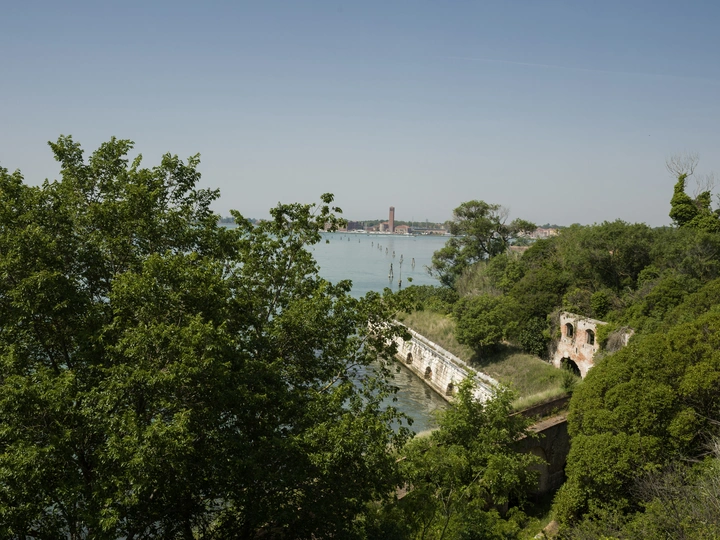Isola di Sant'Andrea

Giorgio Andreotta Calò
Kirsten de Graaf
Alexander Eriksson Furunes
Kristine Jærn Pilgaard
Paolo Rosso
Paolo Rosso is an independent curator and producer based in Venice. He founded MICROCLIMA, which is a research-driven programme that focuses on the natural world, cultural heritage and the public sphere. One such project is Cinema Galleggiante, the annual floating cinema, consisting of a cycle of screenings and performances that takes place on lagoon. Giorgio Andreotta Calò is an artist working in the cross section between sculpture, performance, and architectural intervention, resulting in artworks that are not merely objects but rather manifestations of time, materiality, and space. They take shape through interaction with their environment, embodying a process rather than a static outcome. Kirsten de Graaf is an art producer and teacher based in Venice and Bologna. Marco Bravetti, is a chef and founder of TOCIA, a community based collective of people that are working on a convivial research around food as a tool to investigate the human and non-human landscape of the lagoon. Kristine Jærn Pilgaard is a curator, editor, and art producer. Her primary focus lies in site-specific art projects tailored for public spaces. Notably, she has a strong emphasis on socially engaged art and the role of art within larger institutions. Alexander Eriksson Furunes is an architect and researcher focusing on collaborative processes in design and build projects. Through his artistic research he explores the cultural practices of mutual support as a platform for critical and creative processes.
In his 1903 "Letters to a Young Poet," Rainer Maria Rilke advises against hastily seeking answers to life’s many questions. Instead, by “living” the question itself and embracing these uncertainties, one day, one might find oneself living out the answers.
This aligns with our commitment to Isola di Sant’Andrea, a former fort in the Venetian Lagoon designed by Michele Sanmicheli in the mid-16th century to defend the Republic of Venice. More than just a defensive structure, it was a symbolic place for the celebration of the union between the city and the sea. Since the fall of the Republic in 1797, the island remained under military control, undergoing changes through both World Wars, including a mid-20th-century church addition by the fascists. Currently, nature is reclaiming the fort, both above and below water.
Our team has secured a 19-year concession for part of the island and is working to protect the remainder from commercial speculation. Rather than defining a specific future for this site and its architectural heritage, we are “living the question” through art, architecture, film, music, and food. We will tackle the complex social, political, ecological, and historical challenges of the island, exploring the ambiguity of a place that fuels the imagination beyond its historical role.
As a collective of artists, art historians, producers, filmmakers, chefs, and architects, we introduce Sant'Andrea as a partner in the proposal, contributing its ecological, historical, and social insights. Deeply entangled in ecological and social questions, the Island can help us explore how to “live” the global environmental and social uncertainties of our times.
Where political and commercial interests seek quick answers, the artistic field holds the potential to offer alternative perspectives on challenges we have yet to fully understand. The proposal offers a platform for diverse forms of expression to address the social and environmental challenges of today.